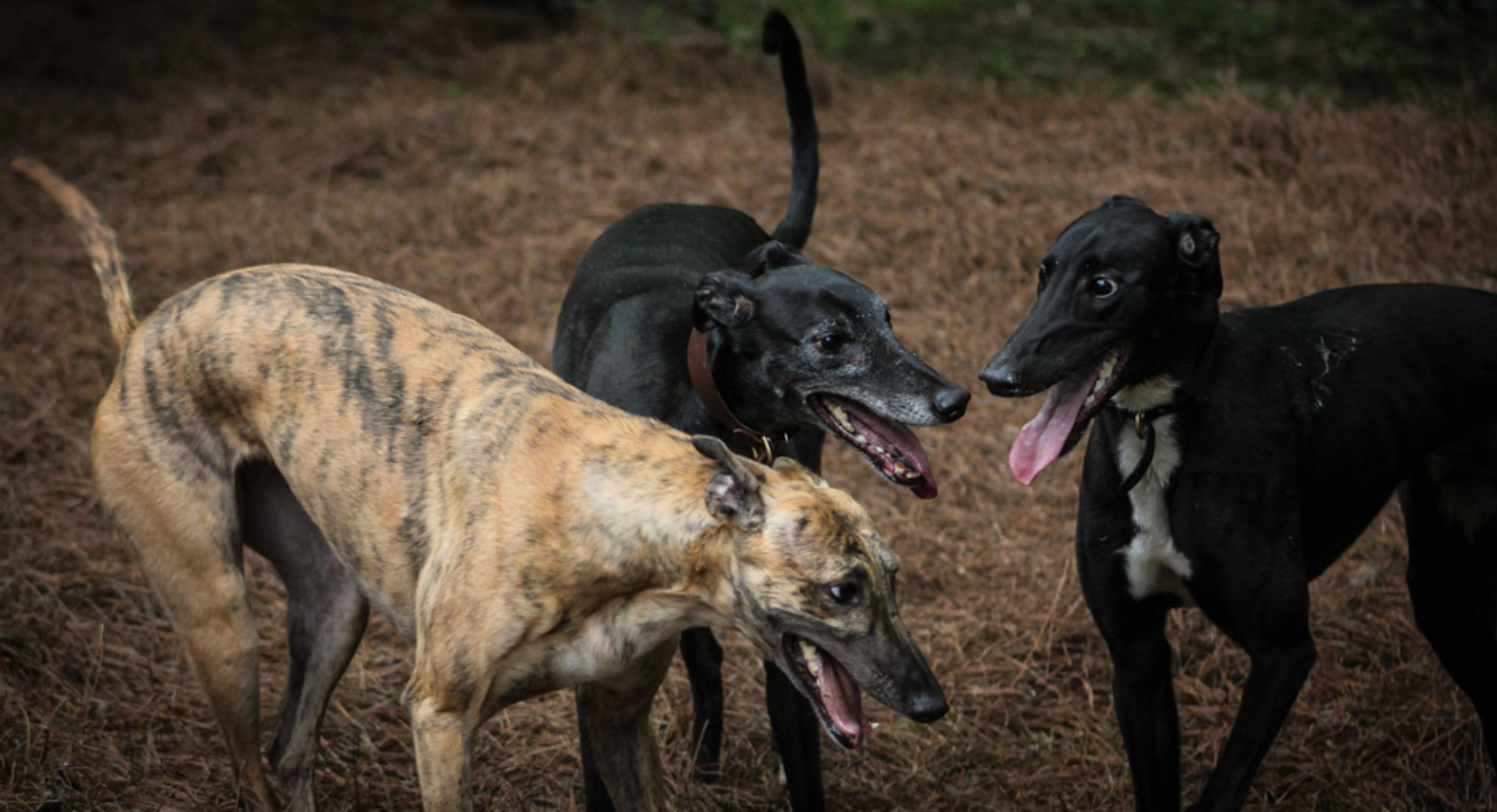Today I am continuing my series on amateur running sports for Greyhounds. In addition to racing and lure coursing I wanted to write about Open Field Coursing (OFC). I did not feel I was a good person to write about OFC, as I have never been to an event (most are out west). It was suggested to have a guest writer post on OFC, and I thought that was a great idea. Next week you will be hearing from Audrey Hsia about OFC and greyhounds. I hope you all enjoy it!
Back to this week’s post on NOTRA or oval racing organized by the National Oval Track Racing Association. So what is NOTRA? NOTRA is oval racing. The hounds are usually boxed at the start but can be hand slipped. The distance of the track is between 241 yards and 440 yards. Greyhounds run three programs in one day. Generally 4 hounds run together, although depending on the number of entrants this can change. To have a Greyhound meet there must be at least two Greyhounds entered. Just like in LGRA or sprint racing, the Greyhound that reaches the finish line first wins. Also, winning and placing Greyhounds earn points that accumulate allowing them to earn titles.
NOTRA requires a little more thought from the Greyhound than LGRA or sprint racing. The Greyhound needs to make a path to get around the track. Some go immediately to the rail while others tend to run mid track and can make up time in the back stretch of the track. Each dog is different and will generally prefer a certain location on the track. The running style of different Greyhounds is fascinating to watch. If you go to a few meets you will see you dogs’ style develop and they will learn more with each run.

What do you need for NOTRA? You need a muzzle and the same 1-4 racing blankets you bought for LGRA. You also need to talk with the race secretary prior, as first time entries will need to be re–registered through NOTRA (your NGA number is fine). Your hound will need to be certified as well – if you Greyhound ran professionally generally they are good to go – but please check with the race secretary prior to the meet. If you have never boxed your Greyhound, it might be a good idea to practice this a few times prior to your first official meet.
As always, make sure you are aware of any injuries your Greyhound may have had on the pro track. Make sure that your Greyhound is at racing weight and well conditioned. Also, please check with your vet before beginning in amateur running sports to make sure your Greyhound is healthy enough to sustain these activities.
NOTRA is a lot of fun. You are able to see your Greyhound’s mind work as they improve with each trip around the track. I also feel that NOTRA reinforces that racing is not a bad or cruel sport but fun and Greyhounds love it.
I hope this has been helpful and you consider trying NOTRA with your Greyhound in the future.
Please check back next week for the final post in the amateur running sports series on Open Field Coursing by Audrey Hsia.
Feature Photo credit: Javier Ocasio






















